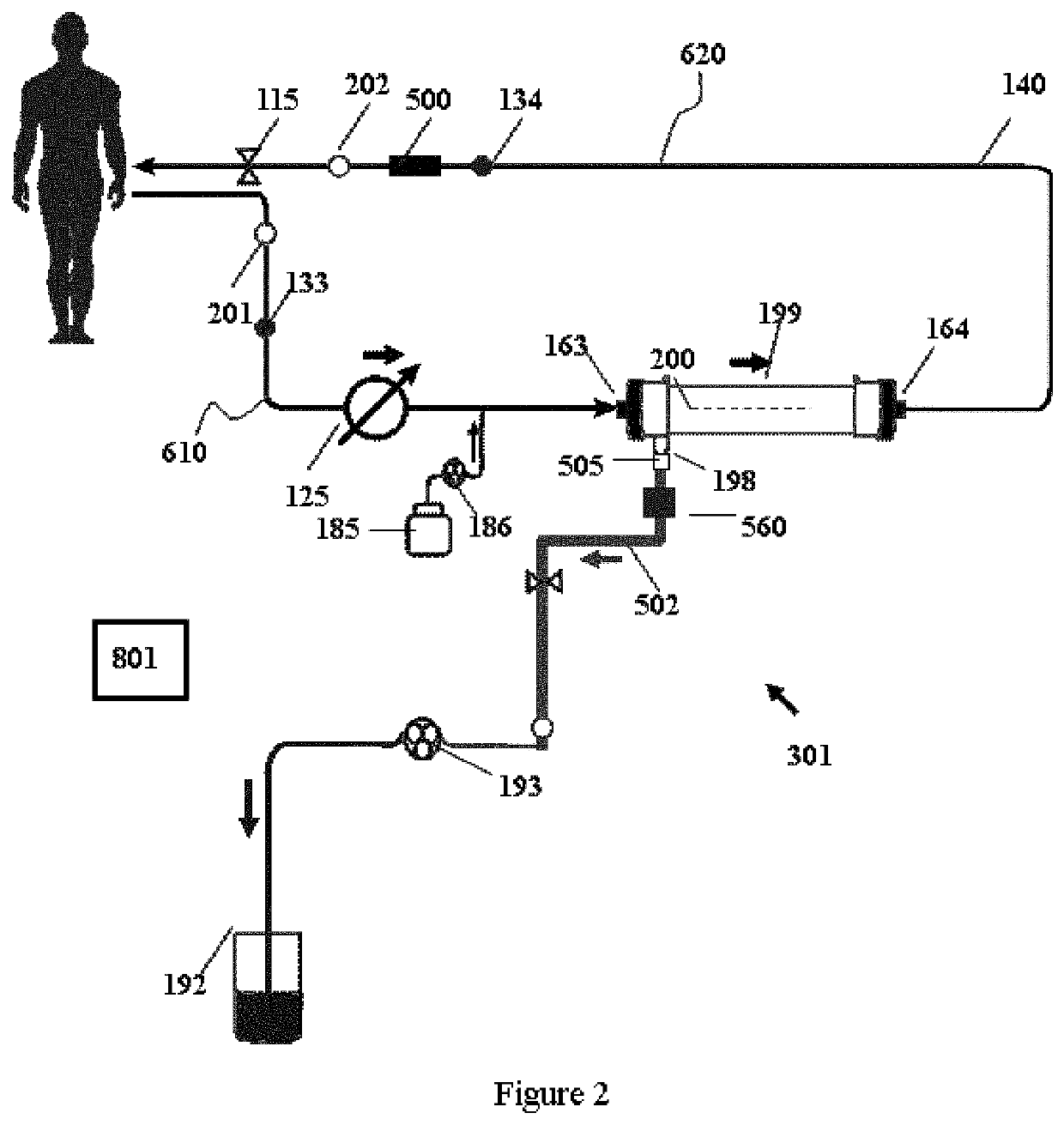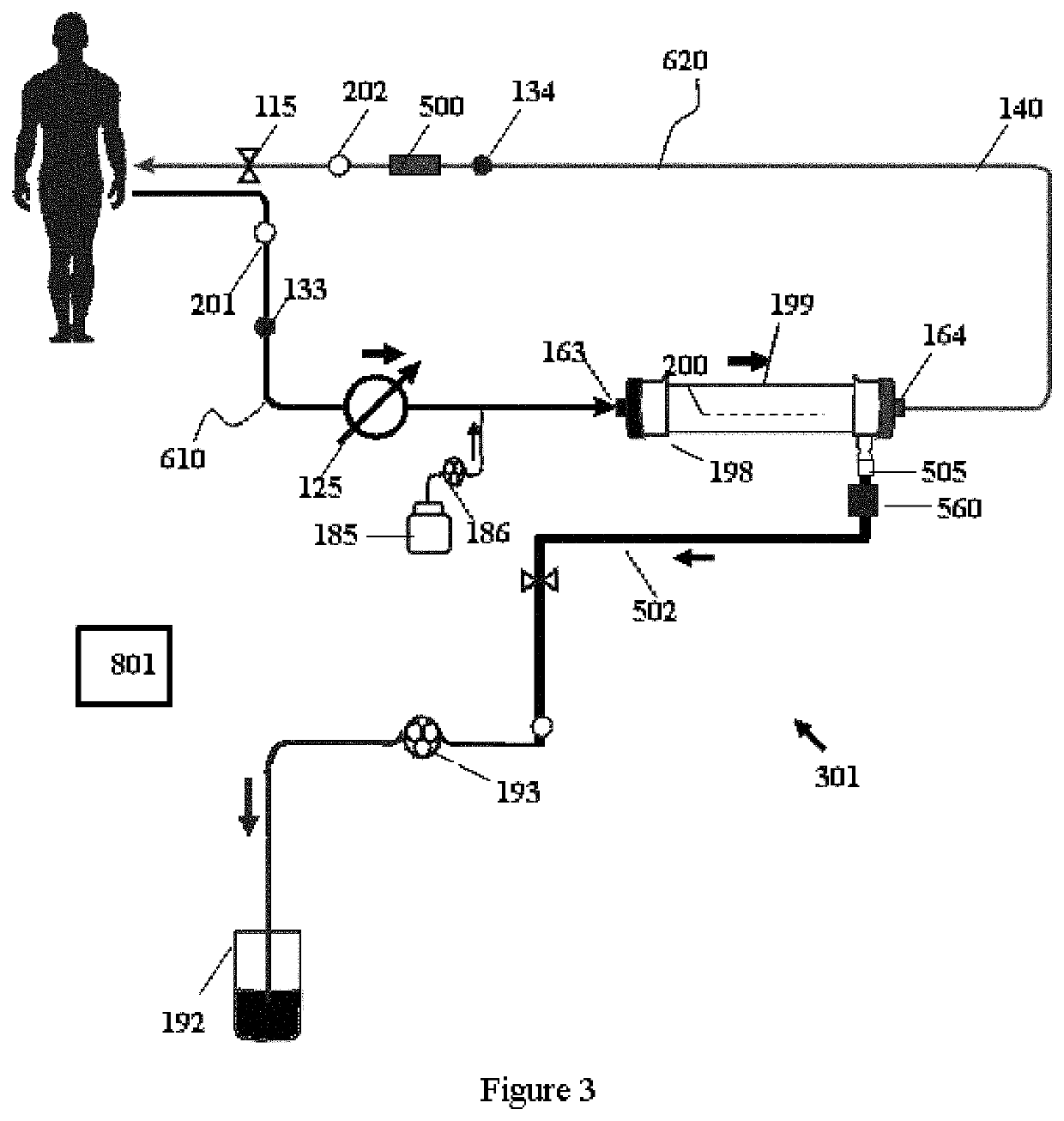Modular hemodialysis system
a hemodialysis and module technology, applied in the field of pathological conditions system and method treatment by hemodialysis and hemofiltration, can solve the problems of dialysis treatment, insufficient clearance function of individuals with kidney disease to prevent urea from reaching unsafe levels, and inability to emulate the continuous function of the natural renal system
- Summary
- Abstract
- Description
- Claims
- Application Information
AI Technical Summary
Benefits of technology
Problems solved by technology
Method used
Image
Examples
Embodiment Construction
[0107]The present invention provides for more frequent removal of accumulated fluid in individuals with End Stage Renal Disease (ESRD). Subjects with ESRD have a reduced ability to eliminate excess fluid from the body leading to a significant degree of fluid retention in body tissues. However, the volume of the blood does not vary by a significant amount from the approximately 5 L volumes for adult humans. Excess fluid can be removed from the body by ultrafiltration of the blood by the present invention. The rate at which fluid can be removed from body tissues by ultrafiltration is limited due to the lag time for replacement or migration of fluid from the body compartment containing the body tissue fluid to the blood. Hence, removal of excess body tissue fluid requires a relatively low rate of ultrafiltration for net fluid removal over an extended period of time. The present invention provides for performing ultrafiltration for fluid removal on a more frequent basis than treatments ...
PUM
| Property | Measurement | Unit |
|---|---|---|
| pressure | aaaaa | aaaaa |
| pressure | aaaaa | aaaaa |
| pressure | aaaaa | aaaaa |
Abstract
Description
Claims
Application Information
 Login to View More
Login to View More - R&D
- Intellectual Property
- Life Sciences
- Materials
- Tech Scout
- Unparalleled Data Quality
- Higher Quality Content
- 60% Fewer Hallucinations
Browse by: Latest US Patents, China's latest patents, Technical Efficacy Thesaurus, Application Domain, Technology Topic, Popular Technical Reports.
© 2025 PatSnap. All rights reserved.Legal|Privacy policy|Modern Slavery Act Transparency Statement|Sitemap|About US| Contact US: help@patsnap.com



